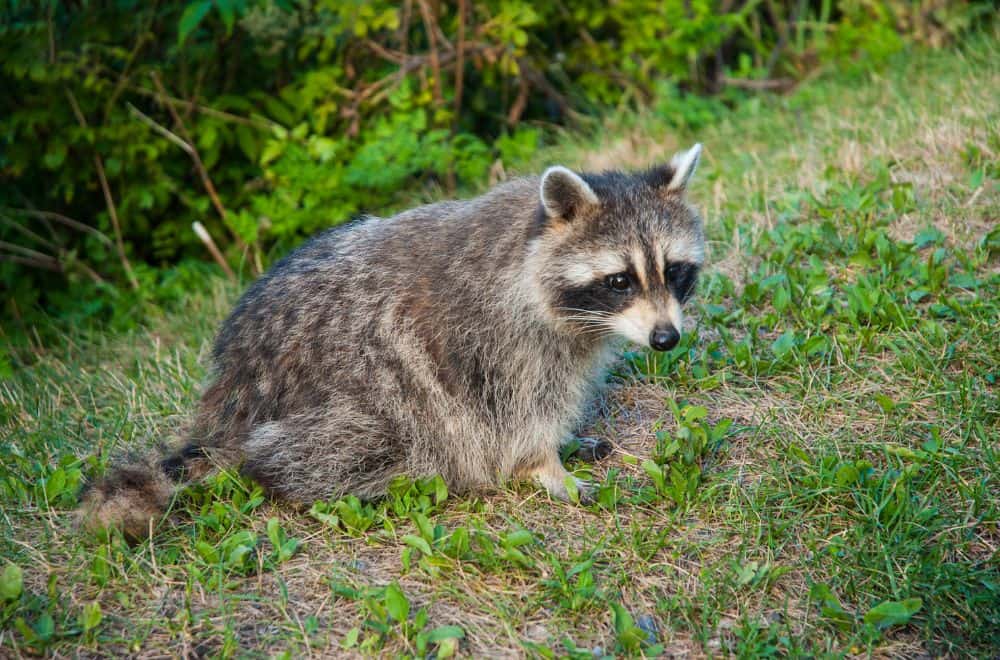Raccoons are intelligent nocturnal mammals that live in the Americas and Asia. They can communicate with each other and use a few ways to do that. Unfortunately, these animals are always loud, regardless of the sound they use at a given moment.
You can recognize several different raccoon sounds at night, each with a specific meaning and purpose. Scientists discovered that raccoons can make over 200 sounds, depending on the occasion. In most cases, they are particularly noisy during the mating season and at night while looking for food.
Raccoon sounds at night |
||
| Adults | Kits (baby raccoons) | Movement-based sounds |
| Chittering | Whining | Rustling |
| Growling | Mewing | Scratching |
| Barking | Crying | Dragging |
| Purring | Chippering | |
| Screeching | Chittering | |
| Whistling | Chirping | |
| Screaming | ||
| Squeaking | ||
| Hissing | ||
| Whining | ||
| Snarling | ||
| Whimpering | ||
| Chattering | ||
| Squealing | ||
| Snorting | ||
| Snoring | ||
Why Do Raccoons Make Noise?
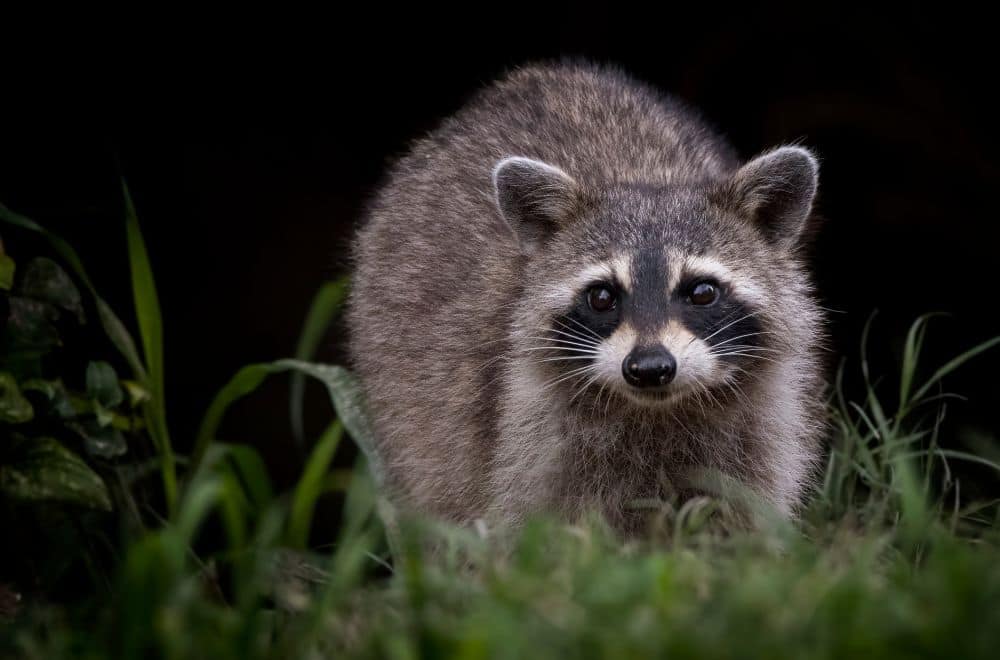
Raccoons are capable of creating various sound types, depending on the situation and their mood. Scientists classified them into several groups depending on the occasion for making a particular sound, including:
- Territorial sounds
- Communication between the nursery members
- Mating sounds
- Parenting sounds
Believe it or not, these unusual, loud creatures can produce over 200 different sounds while interacting with their kind. Each one has a purpose in the following:
- Socializing
- Warning
- Intimidating
- Showing affection, satisfaction, happiness, or dominance
- Attracting
- Surviving in the wild
Sound Types Raccoons Make
Raccoons often combine sounds to express their feelings and chat with each other. Even though they are rarely aggressive toward humans, you should learn to differentiate the ways of communication they use to react timely and appropriately in their presence.
For instance, you should know to recognize angry reactions when a raccoon mom considers you a threat to its babies. Besides, it is better to retreat when running into males trying to intimidate, scare or warn you to back off.
The sounds raccoons make can be particularly scary when hearing them at night. They are a common sign that these mammals are there, search for food, and chat with each other while sharing a meal or arguing over it. The most typical are:
1. Chittering
Chittering combines clicking and purring, and a raccoon needs to use its throat, saliva glands, and teeth to produce it. You can hear this lovely sound when mothers talk with their kits.
It is a way to calm them down when they are upset or frightened for some reason. As soon as kits respond with the same sound, it is a sign they are entirely okay. The sound rate among kits typically depends on the moment of nestling, and its intensity and frequency change while kits mature.
However, this sound appears in some other situations. For instance, raccoons sometimes use it to express their nervousness, discomfort, and fear. Besides, you can hear females chittering during the mating season as a way to let males know it is time to breed.
On the other hand, males use this sound to announce their presence. Once appropriate females hear it, they can meet and mate. Scientists define a few chittering types female raccoons use during the breeding season to attract males and combine them with chasing, playing, and wrestling.
2. Growling
Growling combined with barking is a way raccoons communicate with other nursery members. They provide this specific sound to express excitement when something crucial happens, like finding a big yummy meal or trying to mate.
On the other hand, growling can be a sound that shows a raccoon feels threatened, trapped, and stressed. That way, each animal signalizes others that it is in danger while trying to scare a predator at the same time.
When females use this vocalization type, you can be sure it tries to find kits after losing them from its sight. It also growls to protect its offspring and chases the predator away. In such a case, you can see it pulling its sharp claws out, showing teeth, and arching its back.
3. Barking
Raccoons can bark similarly to dogs when they want to express excitement or panic when a predator enters their territory. You can also hear this sound when a raccoon is injured and in pain.
It is also their typical behavior when seeing food. These animals can’t eat peacefully and in silence but make a horrible noise during the meal or even after finishing it.
In any way, you can be sure that raccoons are highly excited for some reason when hearing them bark. Sometimes, they start barking during the fight, but it is always combined with screaming and crying.
4. Purring
Raccoons can’t purr like cats, but the sound they make when satisfied is most reminiscent of purring. This unique sound is common in kits when communicating with their mothers and when their moms lick and care for them.
Interestingly, this sound doesn’t disappear over time. Therefore, you can hear adults purring when they are satisfied and happy. In most cases, it happens when eating or spending time with their offspring.
You can particularly recognize this sound among females spending time with their kits. However, it is not determined by gender, and even contented males purr. Scientists believe it is probably a reflex from childhood and a time of happiness and carefreeness.
5. Screeching and screaming
This high-pitched screeching sound and screaming always indicate fear and panic. It is always loud and represents a warning to other nursery members. Raccoons sound like that when feeling distressed and totally scared.
Screeching and screaming in combination with snarling and squealing mean that raccoons are highly aggressive towards intruders or even with their own kind. For instance, males make these sounds when fighting for territory with raccoons from a different nursery.
They follow a fierce fight with biting, snarling, and scratching. If you come across two males in conflict, never interfere. Otherwise, both will consider you as an aggressor and probably attack you.
Be aware that such sounds can be a result of a predator attack. In most cases, raccoons feel frightened and become aggressive in the presence of:
6. Squealing
A sick and infected raccoon often creates a characteristic sound of squealing and screeching. Other situations when you can hear this noise type is fighting and mating since healthy and calm animals never produce it.
7. Whistling
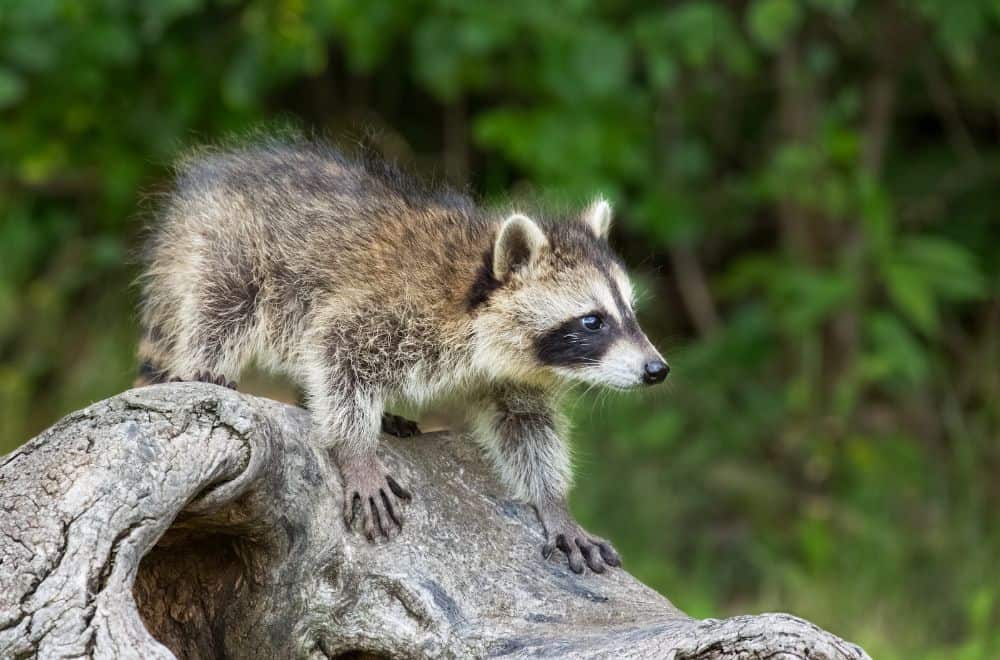
Raccoons produce this sound, looking like the screech owls’ whistles when meeting other animals of their kind. It means they feel peaceful and calm when spending time close to their dens and when there is no danger or distress. Even kits make a faint whistle sound when satisfied and feel protected and safe.
8. Squeaking
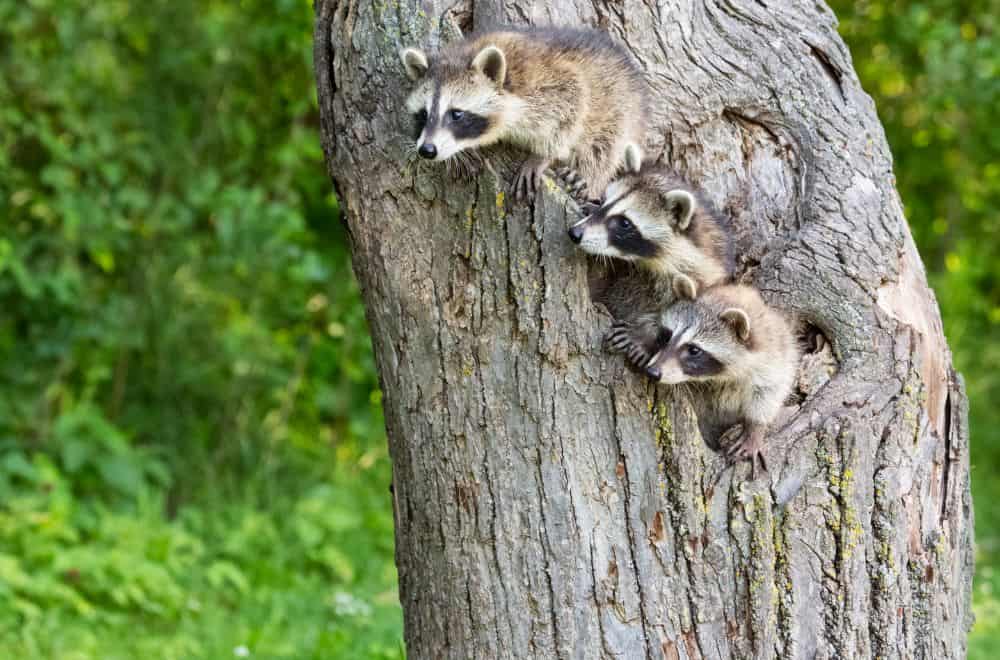
Baby raccoons squeak when hungry, but this sound often combines with chirping and cooing. Interestingly, their moms respond with purring, whistling, and chirring while feeding them.
9. Hissing
Raccoons create a hissing noise when noticing a predator nearby. It should scare humans and animals like small dogs and cats moving on their territory.
On the other hand, females often use hissing to warn males to retreat when they step up to the kits too close. Interestingly, no male raccoon ignores this warning, and everyone walks away immediately.
10. Whining and whimpering
These tragically sad high-pitched sounds are typically a sign of submission that occurs in a situation of high threat or anxiety. Sometimes males use this long, complaining cry during the mating season to convince the female to opt for them.
It is particularly recognizable in young, barely mature males when older ones attract females more. In any case, they always indicate distress and sadness.
11. Snarling
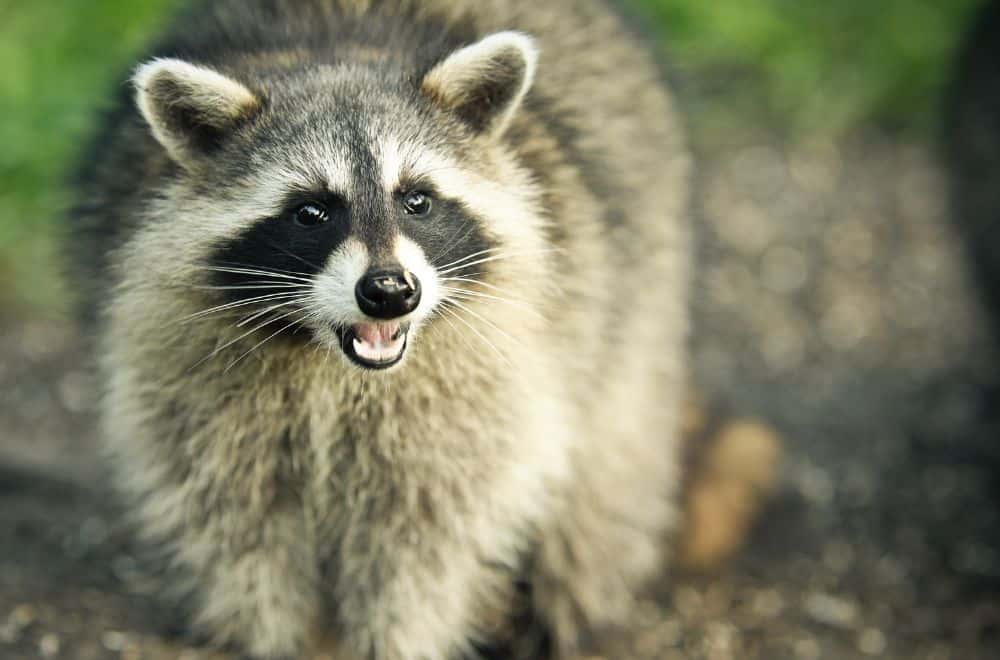
This sound is the most dangerous that a raccoon can produce and is always a warning of high aggression. If you hear any nursery member sounds like this, you can be sure it attacks someone.
Raccoons always combine snarling with a specific posture, including an arced back and upright-positioned tail. It is sometimes combined with growling and hissing, but it always means – Step off!
12. Other sounds raccoons make
Raccoons often make weird sounds like snorting, reminiscent of a pig’s grunting or snoring while sleeping in a safe and protected environment. You can rarely hear them separately since these animals combine different sound types according to their mood.
Apart from making different voices, the raccoons’ movements can cause various sounds that echo the night. The most common movement-based sounds these animals make include scratching, rustling, and dragging.
Kit sounds at night
Kits can produce most sounds like adults, like whining and chittering. However, you can also recognize mewing, crying, and twittering sounds in three-week-old kits after opening their eyes for the first time. It is their way of announcing their presence to other nursery members.
Baby raccoons often sound like birds when they are hungry. In this case, they start crying and chirping, asking for food. Besides, you can often hear them chippering. This baby talk appears in kits when they begin learning to use their vocal capabilities correctly.
Summary
Raccoons can make numerous different sounds while communicating with each other. They are never silent and express every emotion with their voice. For instance, you can recognize specific sounds moms make while calling their young, noises all members produce while searching for food, and those they make during the mating season.
